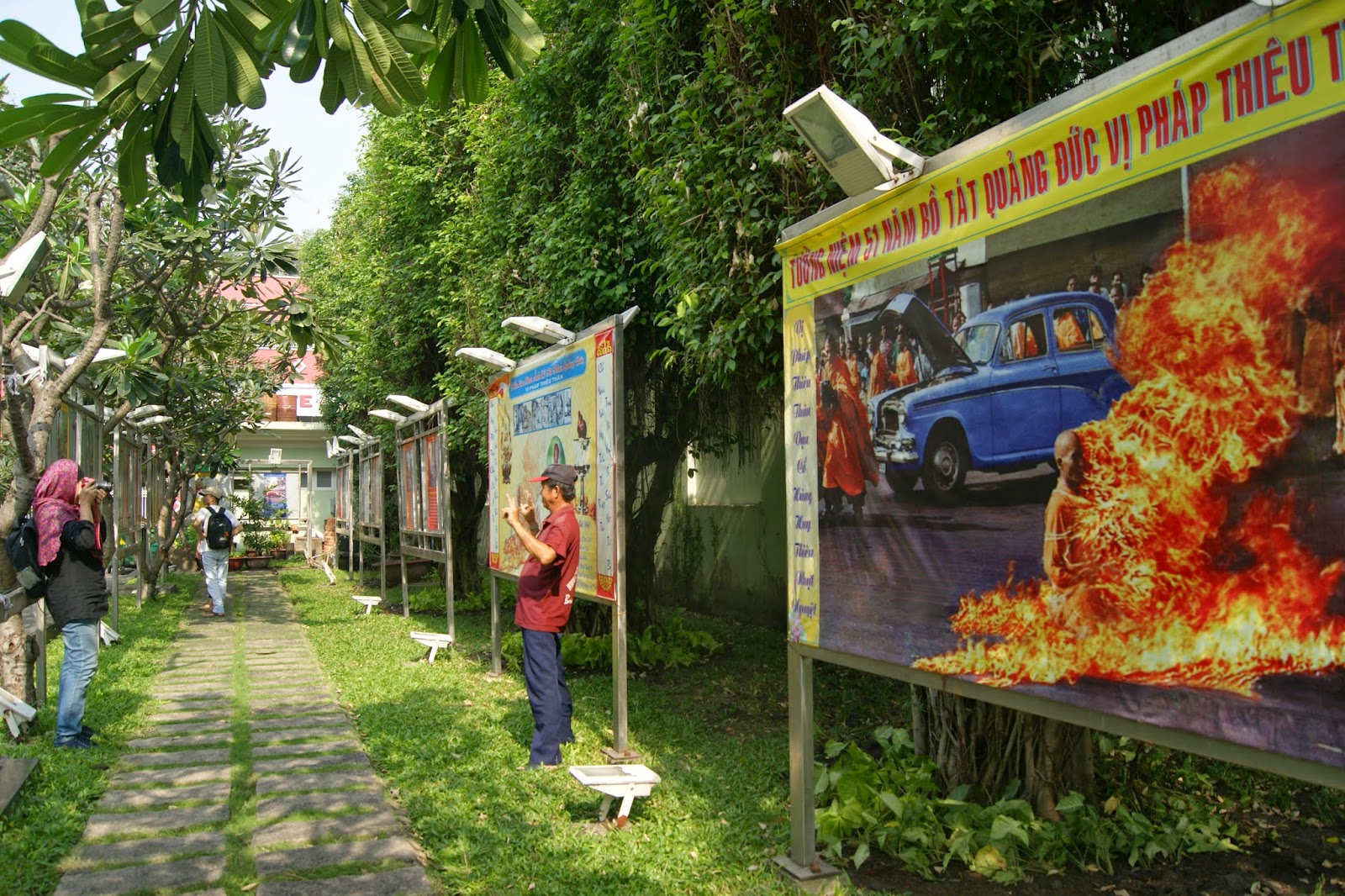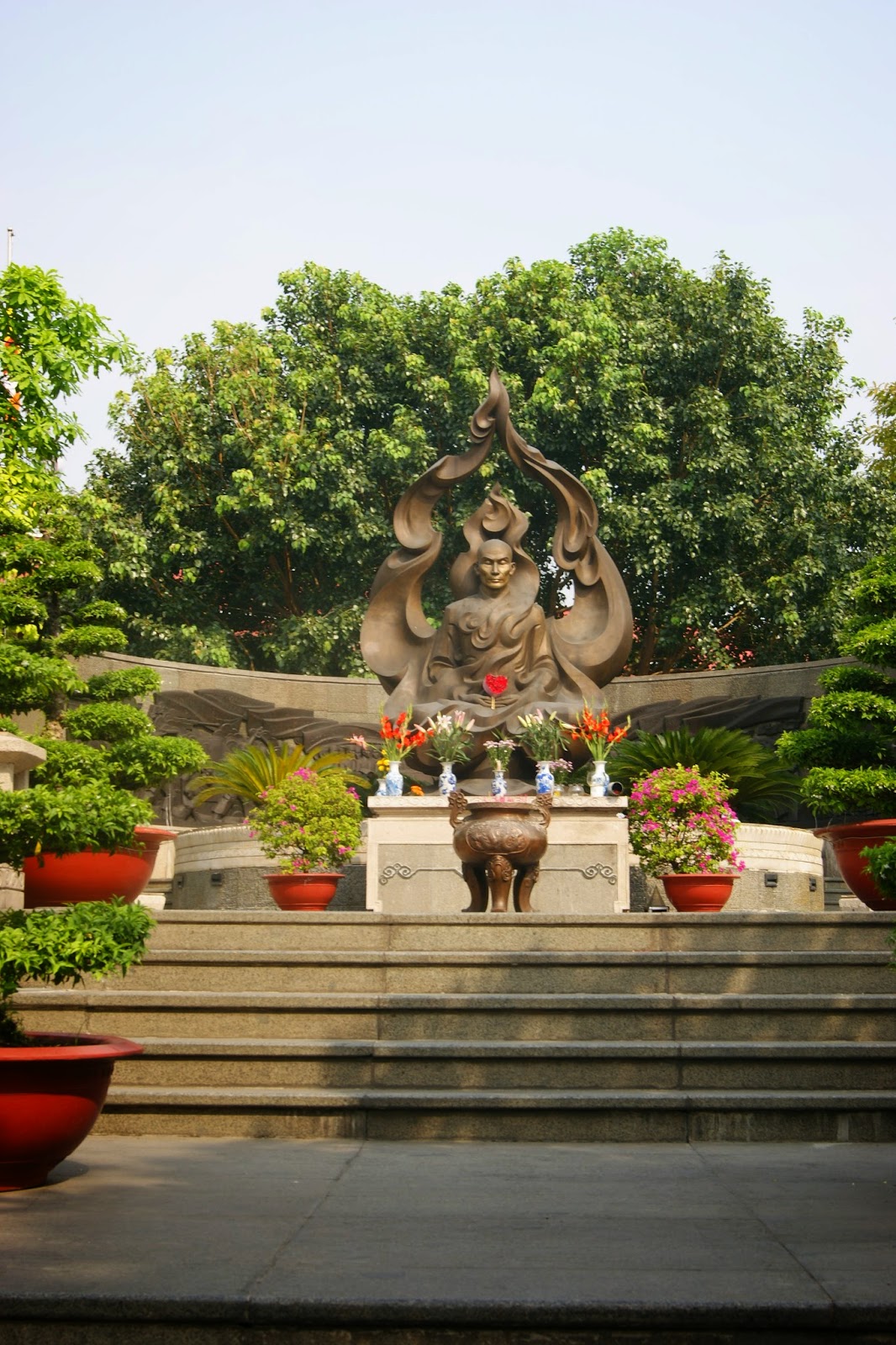Date: 30th December 2014
We skipped few stops which are not so
important to us and instead ask the cyclo driver to drop us at Benh Than Market
as the last delivered point. They have no issue to follow our request so long
as it’s within their contracting hours, i.e. 2.5 hours. We were lucky as they
dropped us right in front of the halal local restaurant, Hajah Bashiroh being famous for a Vietnamese Beef Noodle soup that was on Anne’s search list a night before.
There are many other halal restaurant in a nearby area too. After we bid our
farewell, we went inside and a bit surprised to discover quite a number of
Malaysians were enjoying their meals. Everybody spoke in our mother tongue
including the waiter and the cashier. We did shopping in remaining hours. By
the time we took a cab back to the hotel, we were too exhausted.
Ben Thanh Market is a large marketplace in
a central district (district 1) of Saigon city. The market is one of the
earliest surviving structures in Saigon which had an important symbol of the Ho
Chi Minh City. The city has been an attractive tour destination for most
Malaysian “Makciks” who would love to crowd the place with other tourists
seeking for local handicrafts, textiles, souvenirs and as well as local cuisine. Surprisingly to find quite a number of vendor who speaks a remarkable Malay language inside the market too, it shows how much Malaysian tourist (the makciks). Remarks: Makcik
means aunties in Malay word/language.
The market developed from an informal
markets created by early 17th century street vendors gathering together near
the Saigon River. It was formally established by the French colonial
powers after taking over the Gia Dinh citadel (former province of South Vietnam
surrounding Saigon city in 1859). This market was destroyed by fire in 1870 and
was rebuilt which later became Saigon's largest market. In 1912 the market was
moved to a new building and called the New Ben Thanh Market to distinguish over
its predecessor. The building was renovated in 1985.
Apart from being a major hub for the
network of city buses serving Ho Chin Minh City, Ben Thanh Market is also a hub
for several lines of the planned Ho Chi Minh City Metro; Line 1, currently under
construction which will connect Ben Thanh with Suoi Tien Park and Long Binh in
District 9. On separate note with regards to Line 1 Metro construction,
scheduled for completion in 2018, the city government has approved the USD1.1
billion budget in 2007. The metro will run for 19.7 km from Ben Thanh Market,
underground for 2.6 km past the Opera House, Ba Son Shipyard, and then cross
the Saigon River on an elevated track, passing through District 2 on the way to
Suoi Tien Park and the terminus in Long Binh in District 9. In all, Line 1 will
include 14 stations, with 3 underground stations (Ben Thanh, the Opera House
and Ba Son). Line 2 is also under construction.
 |
| The vendor who speaks good Malay, an excellent marketing girl who made Anne lost her words during bargaining |
Ben Thanh Market is one of the most
recognizable landmarks in the city, whereby this prominent shopping center was
built in 1914 by the French, who originally named it as “Les Halles Centrales”
or the Central Market Hall. The main structure that houses the market is made
of reinforced concrete and occupies an enormous area. Its most famous feature
is the massive clock tower that dominates the neighbourhood.
It is home to several hundred shopkeepers.
The market offers an amazingly extensive and varied selection of merchandise,
ranging from food and leather goods to household items and clothing, as well as
hardware and livestock. The atmosphere here is one of high energy and
tremendous bustle as products arrive from around the country and, throughout
the day, merchants sing out their wares, customers haggle, and tourists wander
in search of great deals.
Kindly take notes that there are many
gates to the inside market. On entering through the main portal on Le Loi
Boulevard, general merchandise is on the left. To the right is closing and
textiles. Moving farther in, to the right are dry goods, such as tea, coffee,
and spices, as well as packaged foods. Halfway in, fresh foods are on the right
and food stalls, where meals are available, to the left. The eateries here are
famous for both quality and price. Since the signage is in English as well as
Vietnamese, you will have no problem to order by simply pointing to the posted
menu.

















































